I’d Go to a Nut Theme Park
Transient
March 2022
Yes! Finally!
Back in 2006 when this website had a different name and a far more limited mission, I was bummed that I’d missed out on what was perhaps Connecticut’s most famous quirky museum. Today, we have many dozens of similar eccentric little museums – and I love them – but none have come remotely close to the national exposure Elizabeth Tashjian’s Nut Museum garnered.
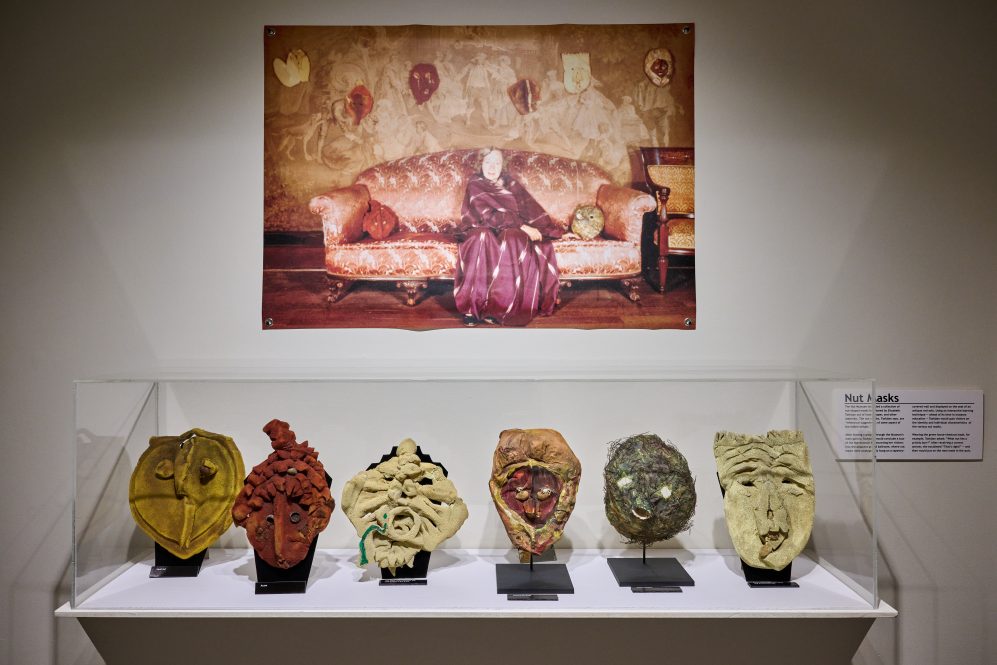
The Nut Museum was a phenomenon of sorts. She appeared on national TV several times with her nuts, her art, her songs, and her unique personality. Tashjian was a true eccentric; to the point where one must wonder if she was simply being exploited or celebrated. I think it was probably a little bit of both.
Her Old Lyme museum closed in 2002 and Tashjian passed away in 2007, so I never got to see it in its proper setting. Her collection was thoughtfully saved and stored at Connecticut College in New London and perhaps due to her extraordinary reach, the Nut Museum is still alive.
It has been exhibited several times since Tashjian’s passing. And that’s just fantastic.
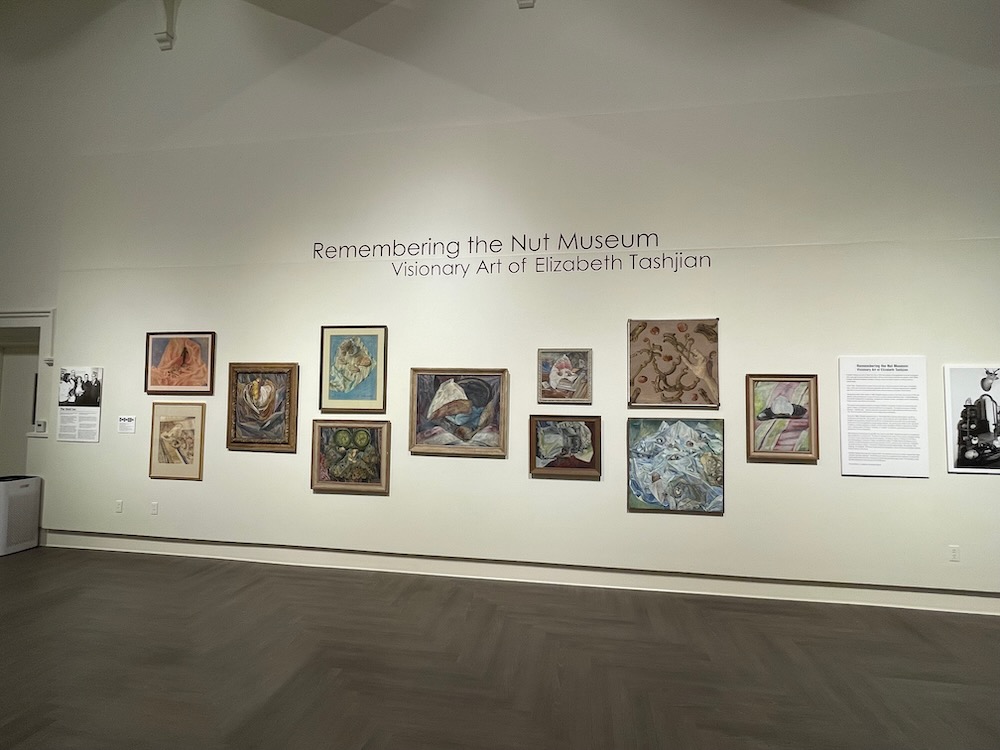
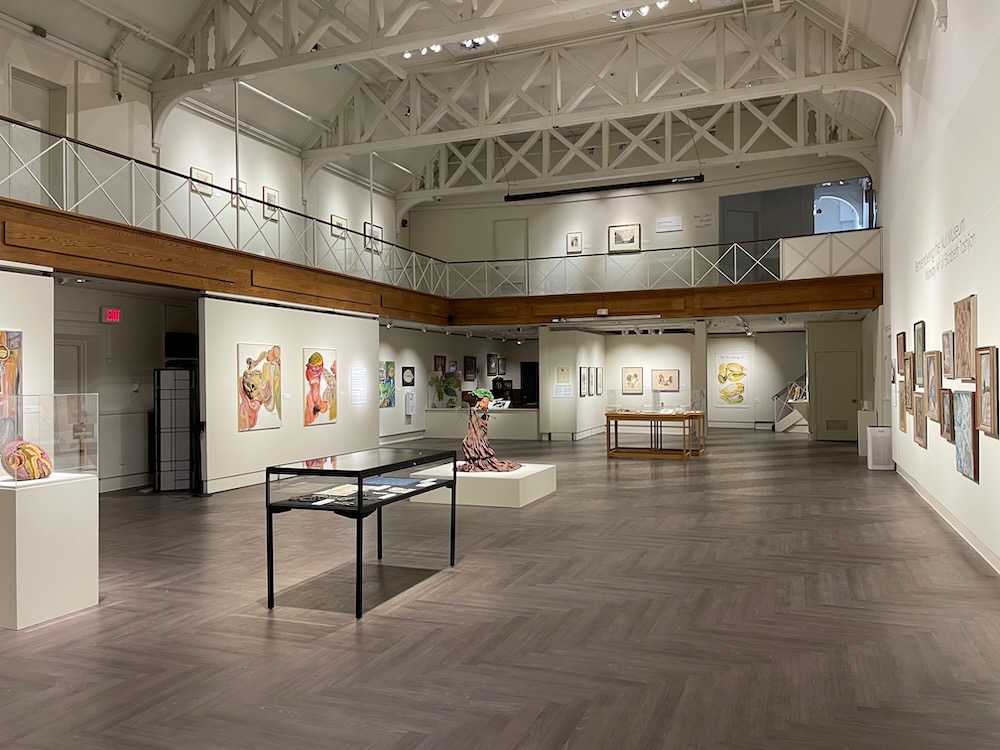
Christopher B. Steiner, art history and anthropology professor at Connecticut College, has curated an exhibit that recreates the museum. The exhibit was shown at the Lyman Allyn Art Museum in New London a few times over the years. I was able to view it at The William Benton Museum of Art on the UConn campus during a short run in the Spring of 2022.
Yes, this was a white whale museum checked box for yours truly, and I couldn’t have been happier. It had been 50 years since Tashjian first opened her quirky museum to the public at her home; a museum dedicated solely to nothing but nuts. Before we get going, I was curious about something after seeing so many coconuts around the exhibit. I had always thought coconuts weren’t actually nuts.
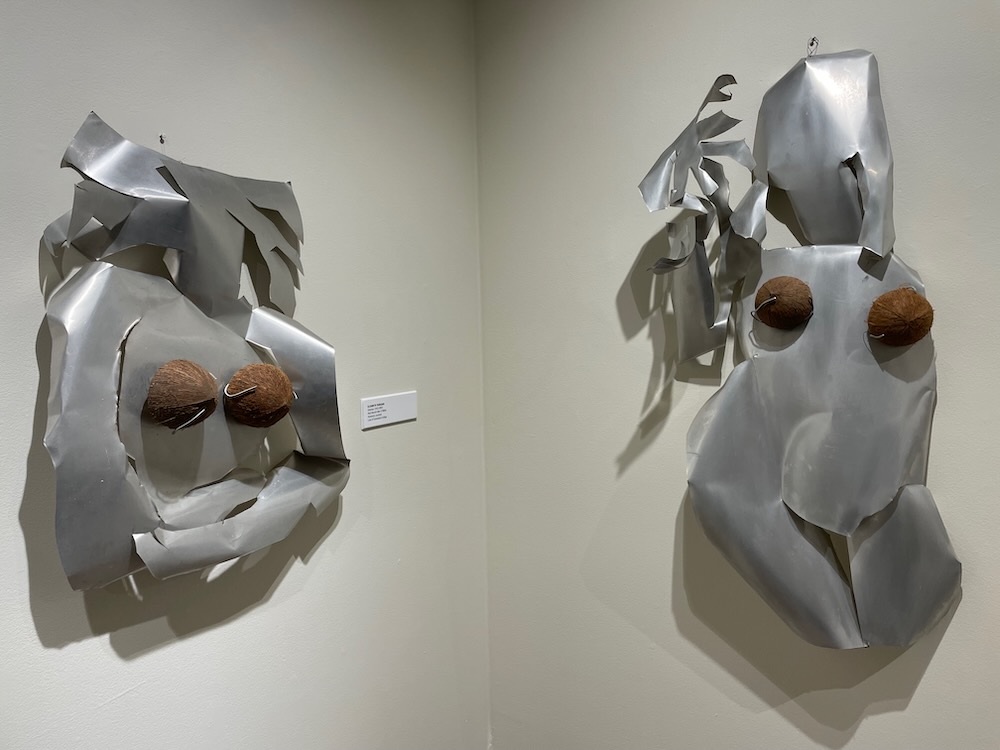
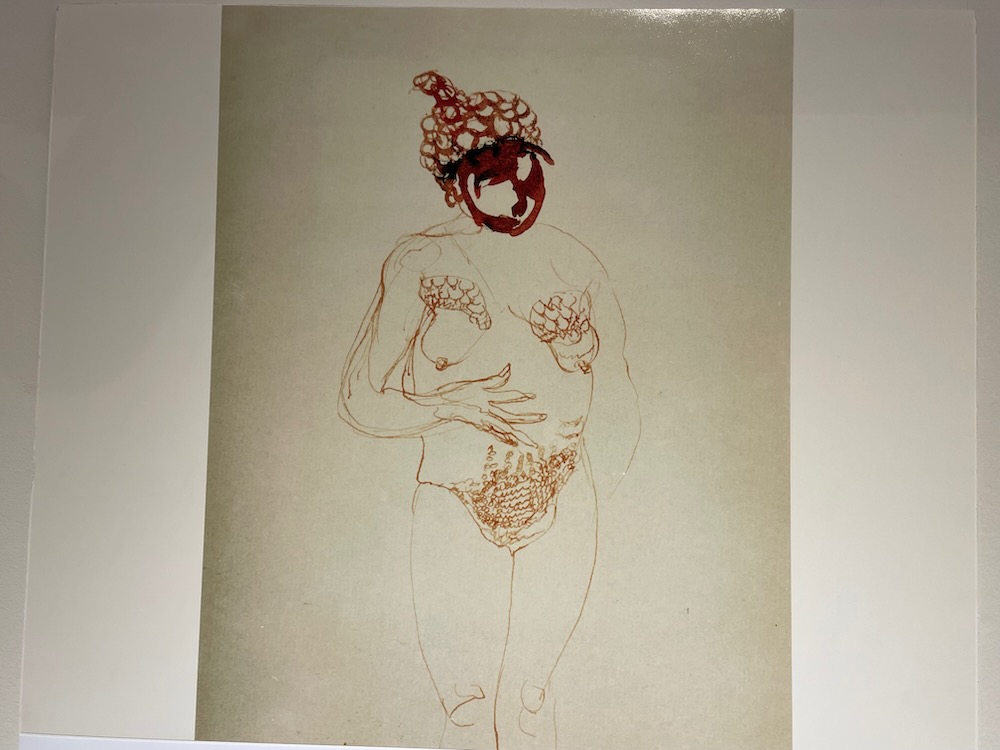
In 1972, Tashjian went through a transformation of her painting style.
“I remember being in the kitchen late at night, with all the lights blazing, and suddenly it came to me. I can’t tell you what it was like. I thought I was going crazy. These artists that do these things, do it with drugs. But I got there on my own. I really took off with this one, and went to Mars!”
Anthropomorphizing nuts became a theme in her art for the next 30 years.
It turns out that coconuts are a type of fruit known as a drupe — not a nut. However, they’re technically a type of tree nut. Drupes are defined as fruits that have an inner flesh and seed surrounded by a hard shell. Confusingly, certain types of drupes and nuts can be classified as tree nuts. Technically, a tree nut is any fruit or nut that grows from a tree. Therefore, a coconut is a type of tree nut that falls under the classification of a drupe. Most nuts, such as almonds, walnuts, and cashews, are botanically defined as seeds rather than fruit. Yet, a handful of true nuts like chestnuts and hazelnuts are technically fruits. The lone exception is peanuts, which are a legume.
I quit. Whatever Tashjian called a nut is a nut in my book. And since my son is allergic, apparently, to some legumes, some true nuts, and some fruits and possibly drupes, that’s all that really matters to me – a person who is not allergic to any of this stuff and finds them all quite delicious.
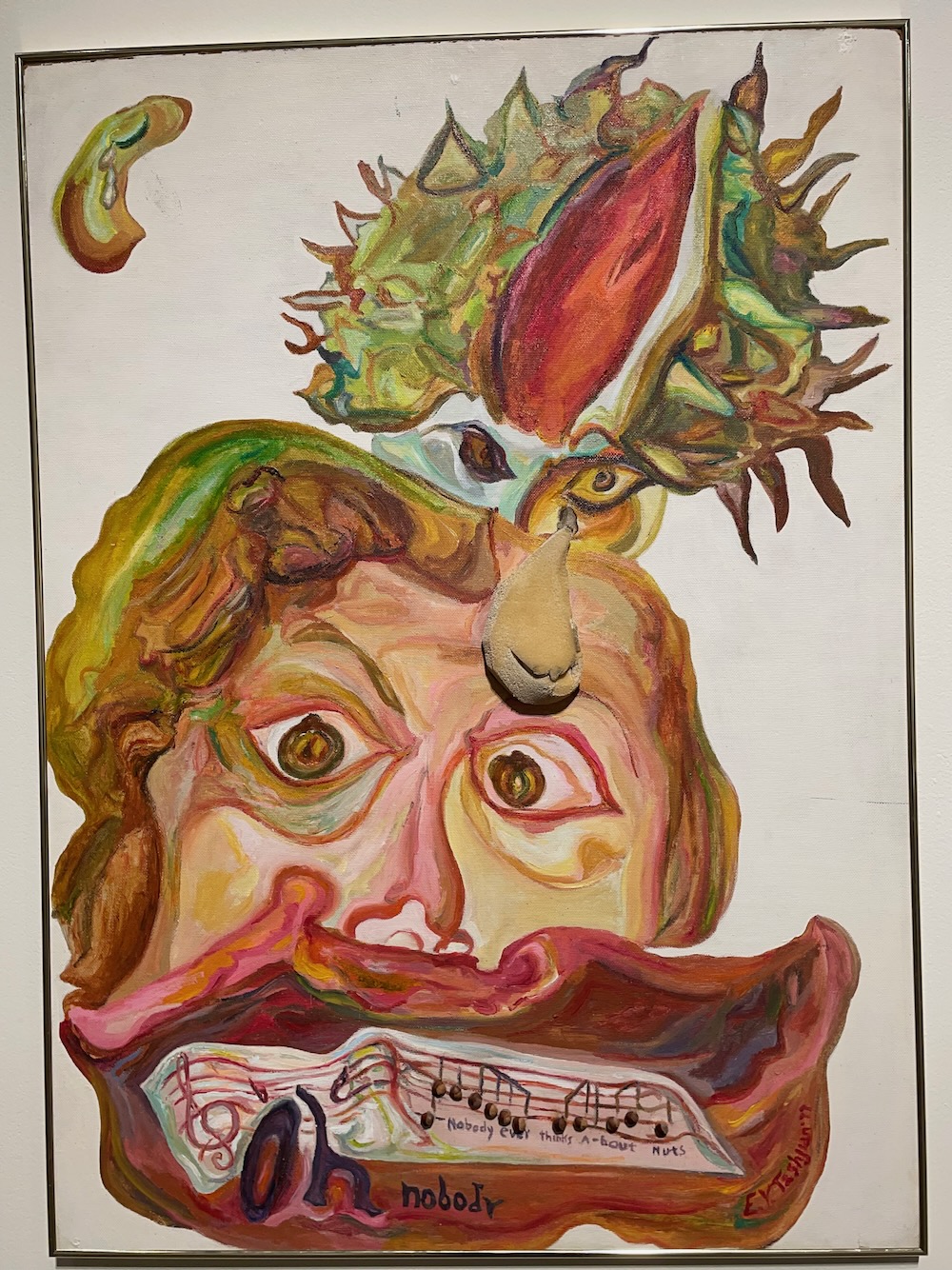
Oh, Nobody Ever Thinks About Nuts (1975)
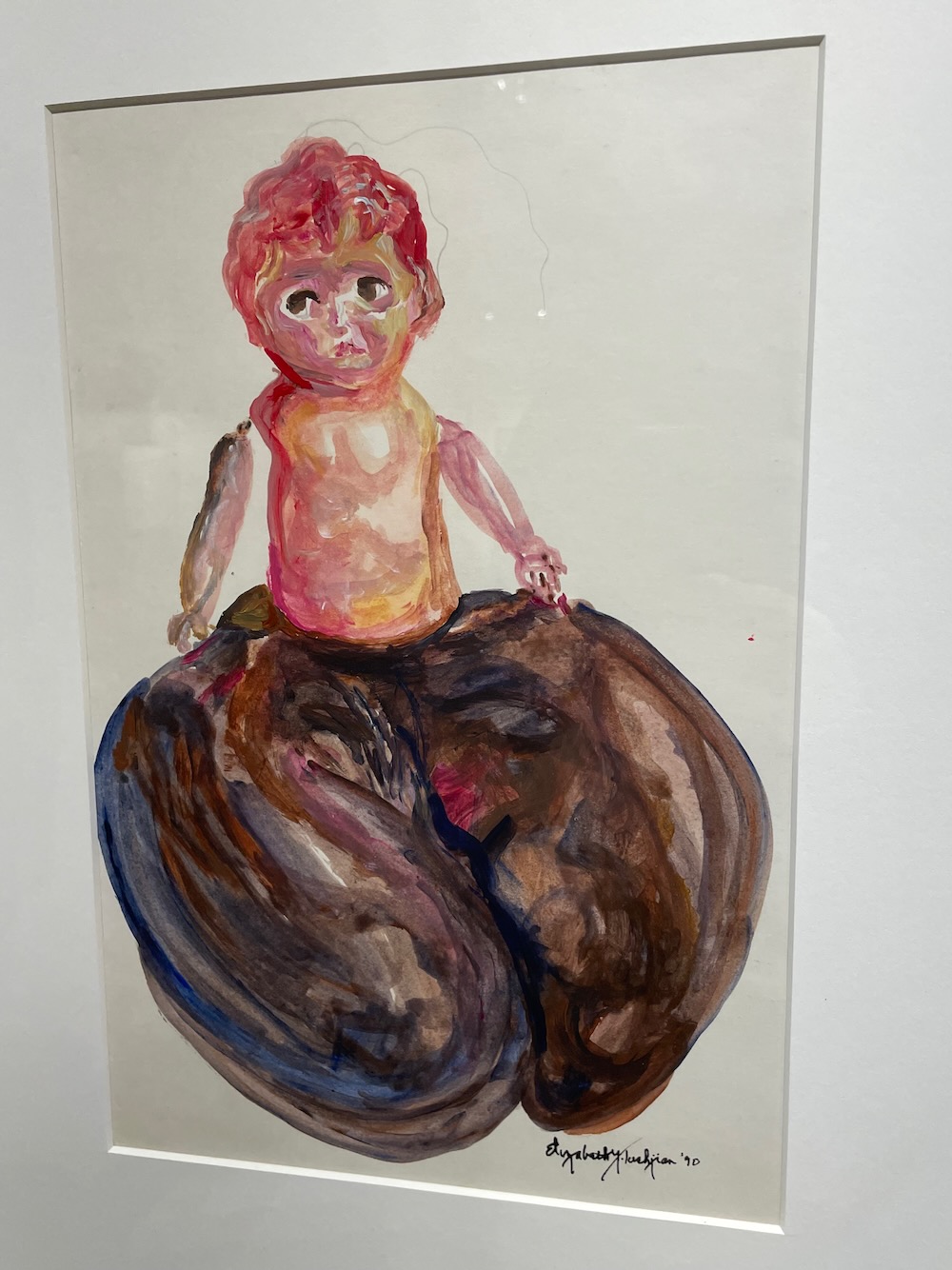
2022 marked 20 years since the museum’s closure and 15 years since her death. The Benton’s exhibit is called “Remembering the Nut Museum” and was set up to closely resemble Tashjian’s museum of legend. Just with more space, better lighting, and more explanatory signage. The exhibit offers (I’m going to keep stuff in the present tense, because I’m sure this exhibit will pop up again at another university or art museum somewhere again) a retrospective of Tashjian’s paintings, drawings, and sculptures from the 1930s until her death. It recreates the Nut Museum’s main gallery, with all of its original furnishings, art, and displays.
More? it features a compilation of the “Nut Lady’s” media appearances on national television.
I made my way through another Benton exhibit before entering the large Nut room. I wasn’t sure what to expect, and seeing the volume of her paintings was a surprise. Tashjian was a prolific and fairly accomplished artist. Although many viewed her as such, she was no joke. Tashjian was born in 1912 in New York City, the daughter of Armenian parents who divorced when she was young. Art and music were prominent in her childhood. She was a violin virtuoso at age nine, and in her late teens won a scholarship to the School of Applied Design for Women. She later graduated with honors from the National Academy of Design.
(All this does is make me again question how much of her public persona was real and how much of it was performance art. Perhaps we’ll never know.)
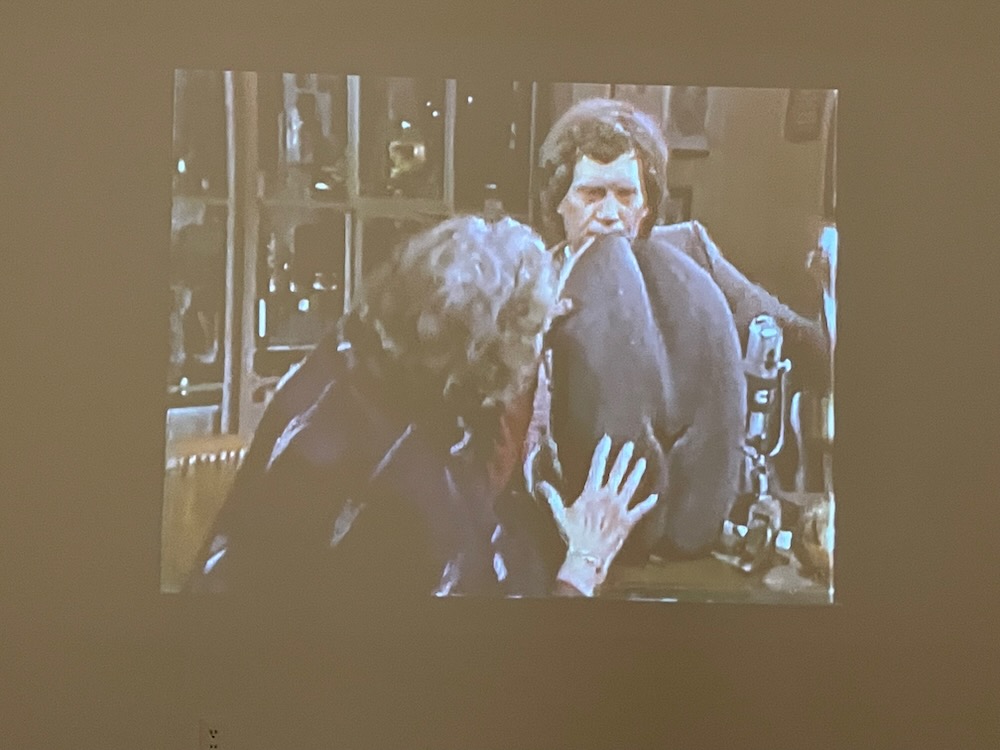
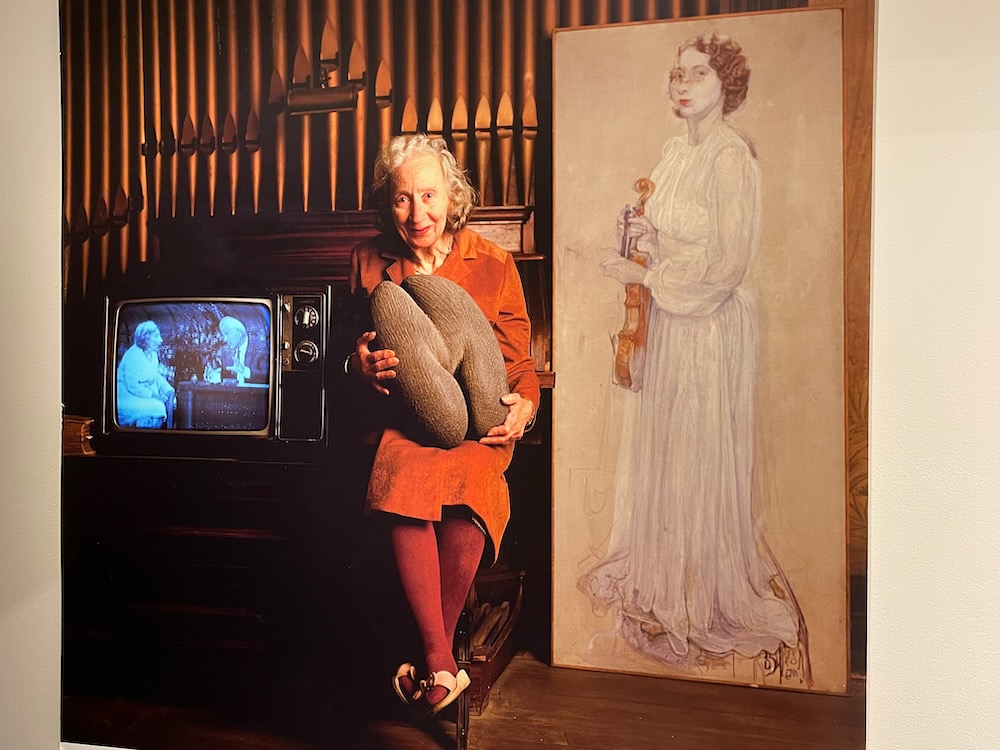
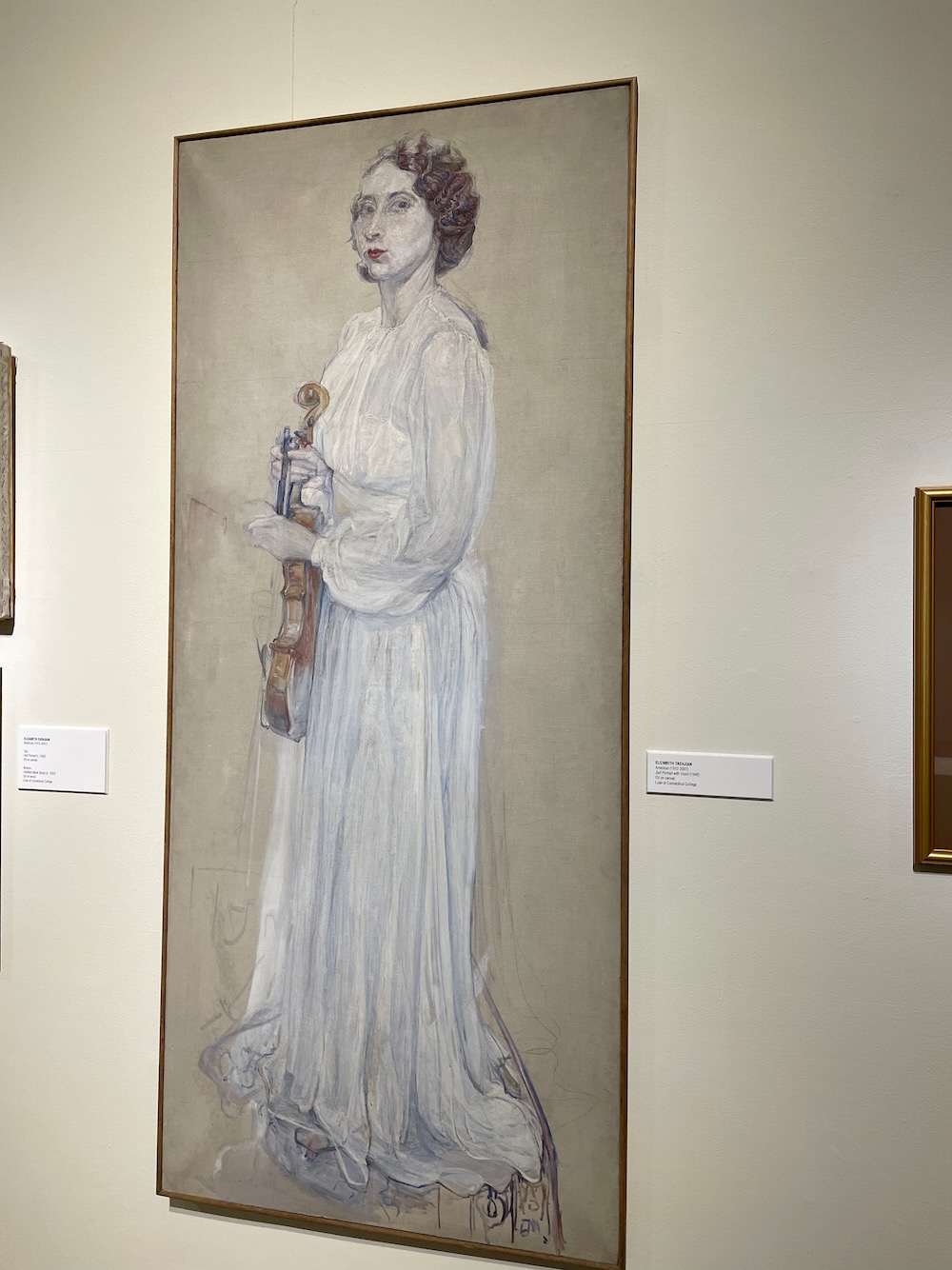
Self portrait
Tashjian’s artistic interest in nuts began shortly after her arrival at the Academy, where she painted both nut still-lifes and highly magnified cross-sections of nuts. One work characteristic of this period is the Nutcracker Suite (1937), which depicts cracked nuts and a pair of eagle-headed nutcrackers strewn across a richly embroidered white cloth. “Our family liked nuts,” says Tashjian. “We had bowls and bowls to eat, to play with, to garnish dishes, and one day they became more than edible delights; they became paintable subjects for me. And that’s how it all started.”
“To play with?” Man, my kids are so spoiled.

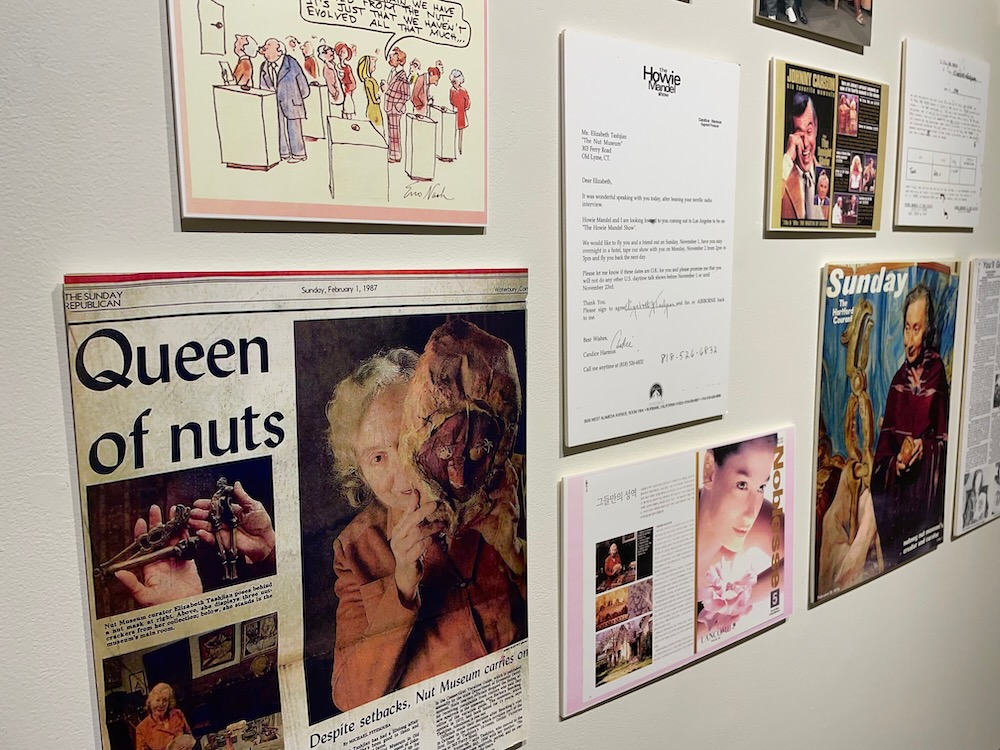
After moving to Old Lyme, Connecticut with her mother in 1950, Elizabeth Tashjian became active in the Lyme Art Association, where she often exhibited her work. In 1959, following her mother’s death, Tashjian grew more secluded in her home. On a whim, Tashjian opened the Nut Museum on April 22, 1972. “I didn’t really give it too much thought,” she says. “I’m a minute-woman, and the idea of a Nut Museum just came to me.” The museum was housed on the ground floor of her sprawling 19th-century Victorian mansion at 303 Ferry Road. The home’s dining room served as the main exhibition gallery, and featured Tashjian’s nut paintings, as well as a collection of nuts, nutcrackers and nut-related memorabilia.
Although the Nut Museum’s original mission was to highlight the beauty of nuts as depicted in Tashjian’s art, the museum’s scope soon expanded. “As creator and curator of the Nut Museum,” Tashjian says, “I became aware that some people have a load considering themselves to be a nut. So my motives changed. I set out to remove the demerit marks from the word ‘nut’. My painting then used the power of art to make social commentary.”
Noble. And nuts. One lone woman toiling away on her nut paintings and nut collection in Old Lyme was going to remove the pejorative use of “nut” and “nuts” all by herself? That’s nutty.
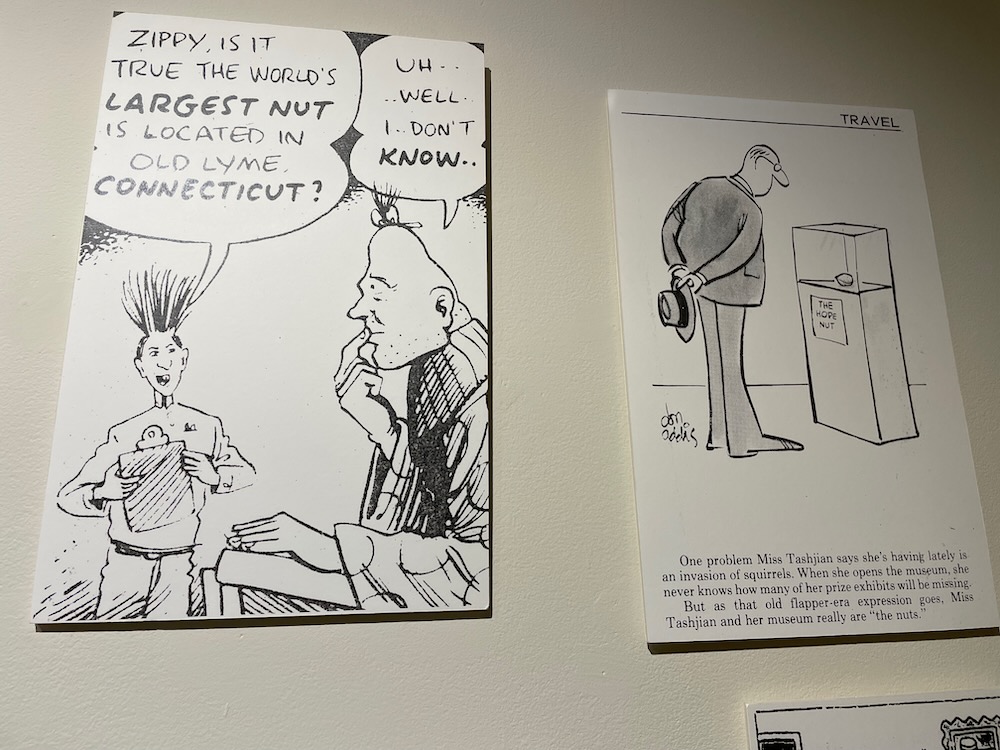
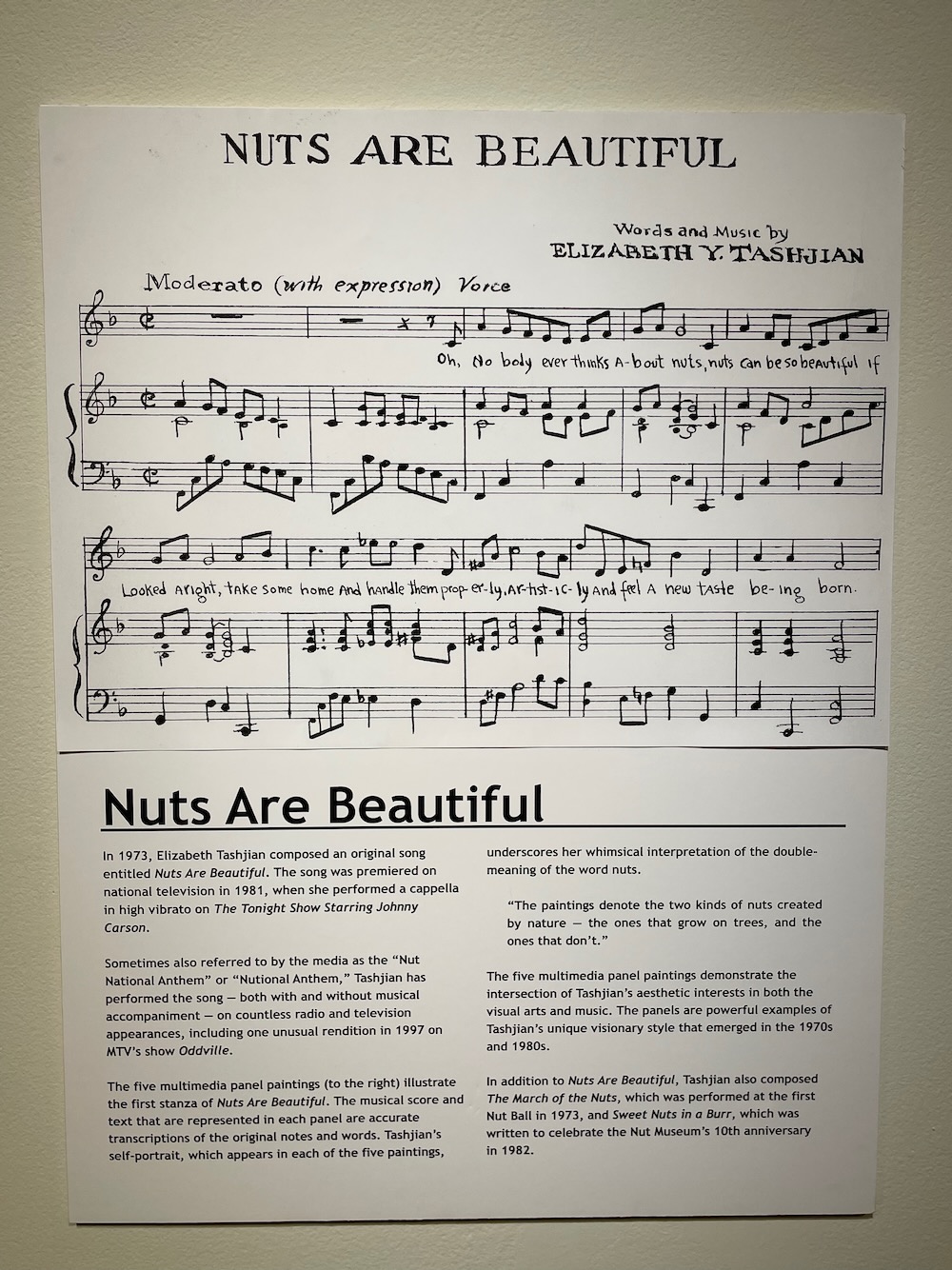
As I strolled around the exhibit, I was impressed with her art. But I was more impressed with the collection. The evolution of her works is clearly seen over her 50 years of output. In fact, the paintings steal the show for me – not the assortment of actual nuts. Though the “nut memorabilia” collection was also impressive. I became a fan of Elizabeth Tashjian.
Soon after the Nut Museum opened, a visitor donated to the museum a 35-pound nut called the coco-de-mer. Found only on one island in the Seychelles, the coco-de-mer is the world’s largest kind of nut, and has long been a source of curiosity and intrigue. Because the nut’s contours strongly resemble the female pelvis, Tashjian argues that this unusual specimen challenges Darwin’s theory of evolution. “I’m using this nut to make a joke of the material origins of Man. I say ‘Out with apes and in with nuts!’.” In the Nut Museum, the coco-de-mer held a place of honor on an elegant Chinese Dragon Chair.
The coco-de-mer was the subject of many of Tashjian’s later paintings, drawings, and sculptures. A watercolor, entitled Offspring of Coco-de-Mer (1990) depicts a small plastic doll emerging – like a baby from the womb – out of the nut’s shell. The image evokes in visual form Tashjian’s joke on evolutionary theory.
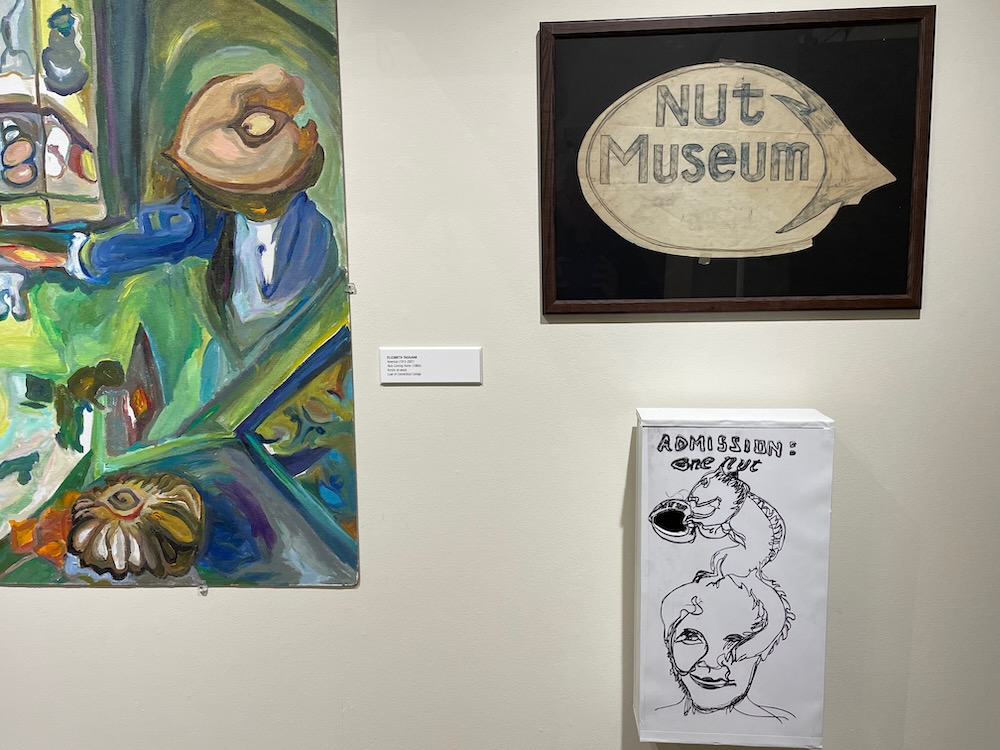
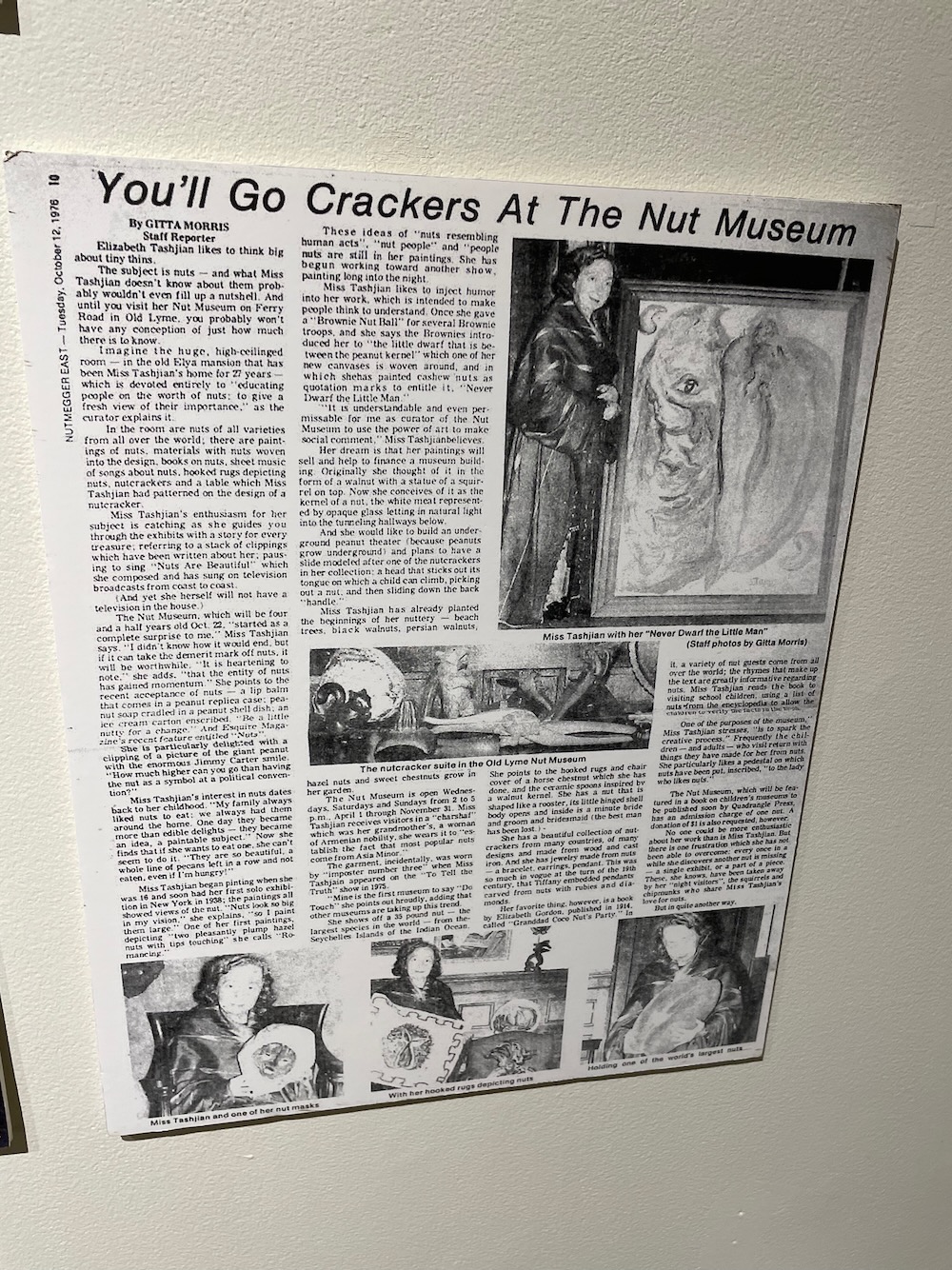
Whimsy! Self-effacing humor! Definitely a fan. When I was a wee lad in the early to mid 1970’s, Tashjian was busy writing her songs about nuts. The most famous (infamous?) two are “Nuts Are Beautiful” and “March of the Nuts.” She painted a series of five large paintings depicting stanzas in the first song and if I were to guess, it was probably the songs that put her over the top and got her invites to late night TV.
In 1981, Tashjian appeared on the Tonight Show Starring Johnny Carson. Her success with Carson led to scores of other talk show appearances, including interviews with David Letterman, Jay Leno, Howie Mandel, Roseanne, and Howard Stern. Tashjian’s television performances generally included a rendition of one of her songs. She was not a good singer, but she kept up the act through her renditions and the hosts usually tried to play it straight.
And this was when, to my mind, Tashjian moved into the second phase of her art career: that of an avant-garde performance artist. She was obviously intelligent and talented, but also must have been motivated by fame to some degree. The exhibit has these television appearance on loop and in the several that I watched, she never breaks character.
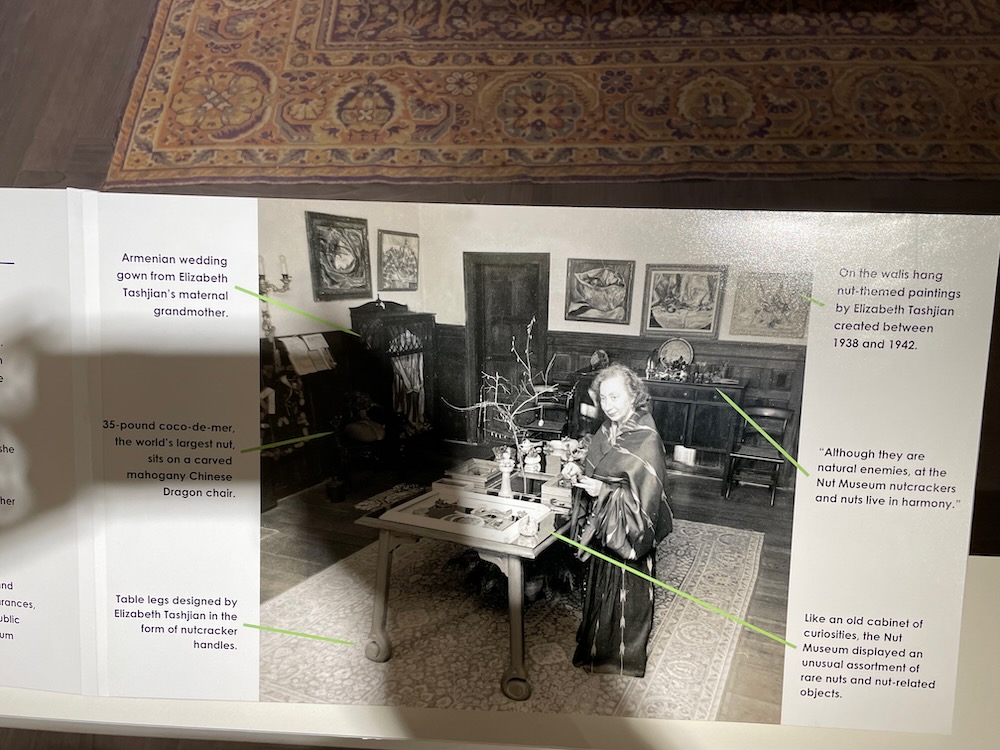
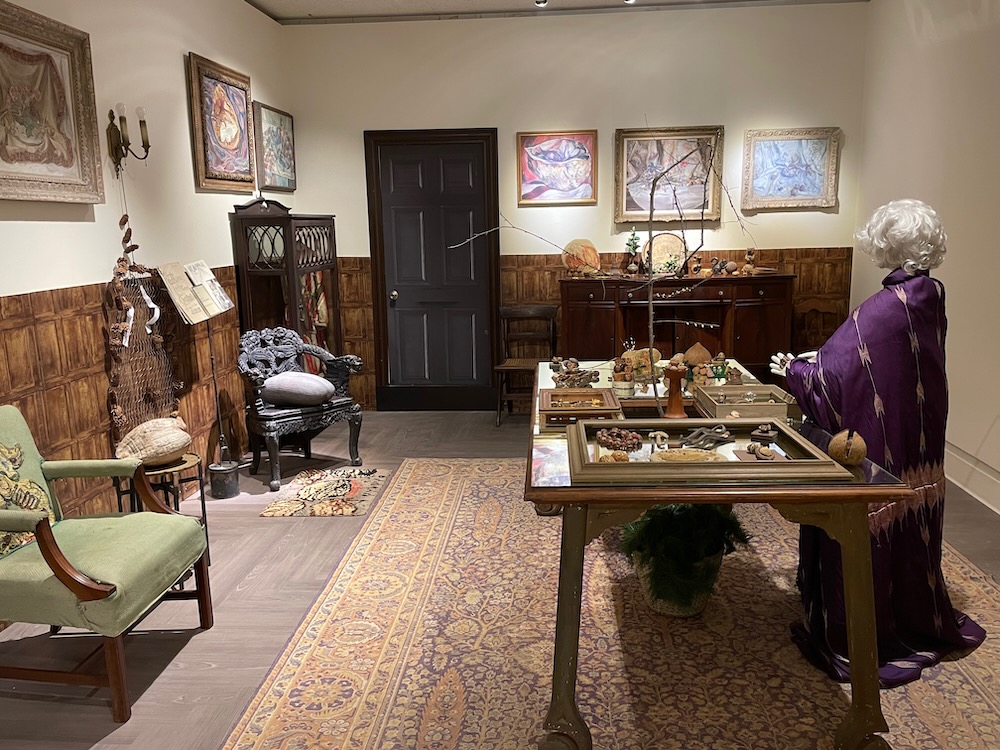
Now, what that character was can be debated. Was that the true Elizabeth Tashjian? She was clearly obsessed with nuts, and enjoyed many aspects of them. But was she… like… obsessively obsessed to the point of unknowingly going on some of the most popular shows in American to warble through her songs and act like everyone is as interested in nuts as she was? I say no. The whole thing was likely 50% obsession and 50% act. Regardless of the truth behind her persona, I rather loved what she did.
And I love what Christopher B. Steiner of Conn College has done preserving the museum. I’ve read that he uses the collection when he teaches museum studies as “an example of a modern cabinet of curiosities.” He’s curated an exhibit featuring almost 50 of Tashjian’s paintings across her decades of work. And yes, the beloved coco de mer is there, placed on her mahogany chair from her dining room. I’m nut sure… err, not sure I’ll ever visit a recreated museum in another museum to this degree again in my life.
“There is this tradition in American museums of these quirky, eccentric, off-beat museums, and there’s a following out there of people who want to go to these places,” Steiner says. “A lot of times they’re also linked to roadside attractions. People drive across the country and stop at the Biggest Ball of Twine, the biggest pencil in the world. I don’t think that would have been Elizabeth’s choice; I think she thought of herself as an artist… But she ended up being lumped into these tour books of weird roadside attractions and that’s where a lot of her audience came from.”
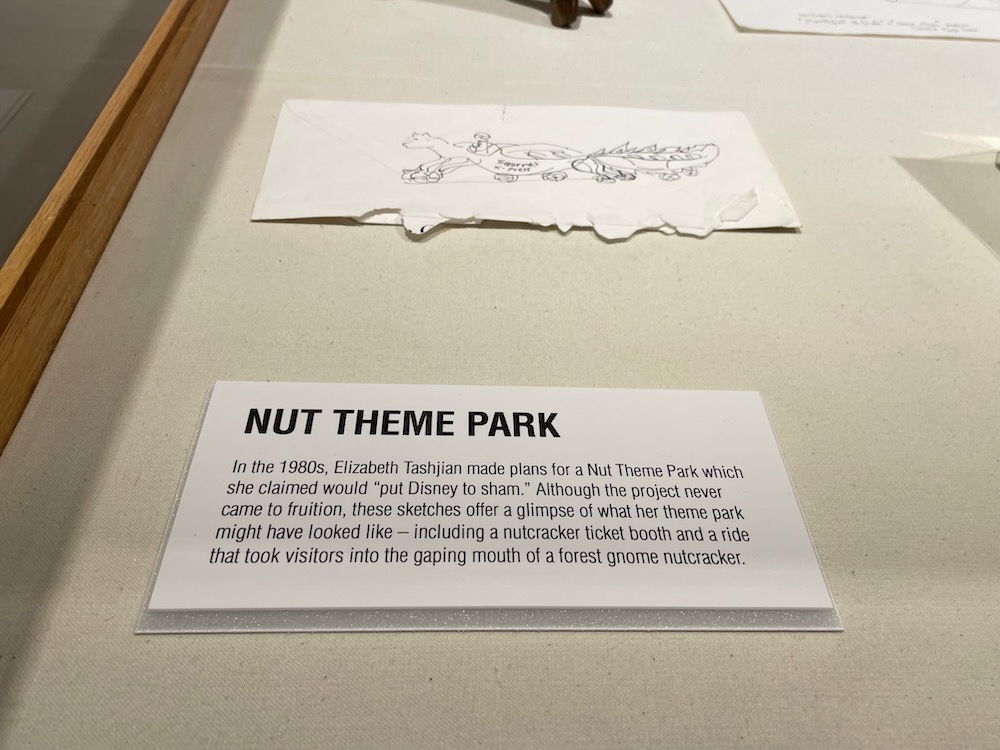
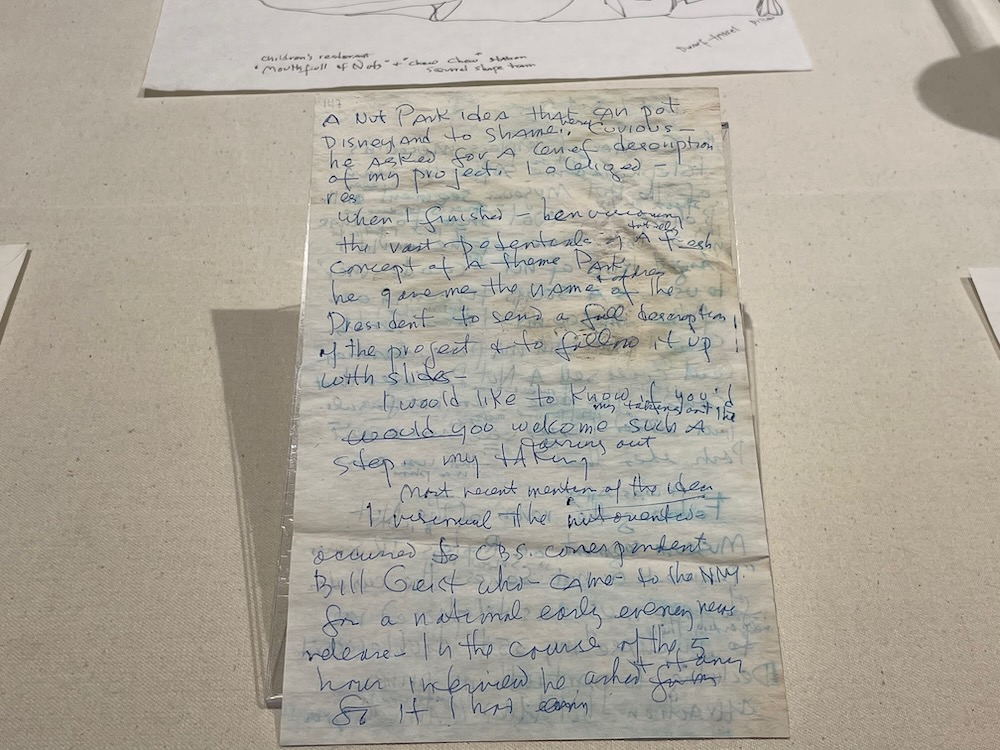
“A Nut theme park idea that can put Disneyland to shame.”
Part of this exhibit’s goal is to gently portray dementia in a caring and subtle way (see note from Tashjian’s last years below).
Hey, Steiner! I hope you’re not denigrating those people out there who like to visit “quirky, eccentric, off-beat museums!” You and I may have to have words if that’s the case. And if so, I… I… I’d simply thank you for saving The Nut Museum. I visit every quirky, eccentric, and off-beat museum in Connecticut and every time I do it occurs to me that when the quirky, eccentric, off-beat collector passes away, that museum will likely disappear. I’m not going to get all philosophical on you here, but I do privately think that CTMQ is a fairly “important” place for these museums. My hope is that these pages exist until the world burns up in a few hundred years. Connecticut’s own Cabinet of Curiosities so to speak.
I never had the chance to meet Ms. Tashjian or see her museum in its natural setting. I would have loved paying the admission price (one nut) and would have relished some time with a toned down nut fan. Truly one of Connecticut’s most interesting and beloved characters over the last 50 years.
RIP Ms. Tashjian, may your museum, art, and legacy live forever.
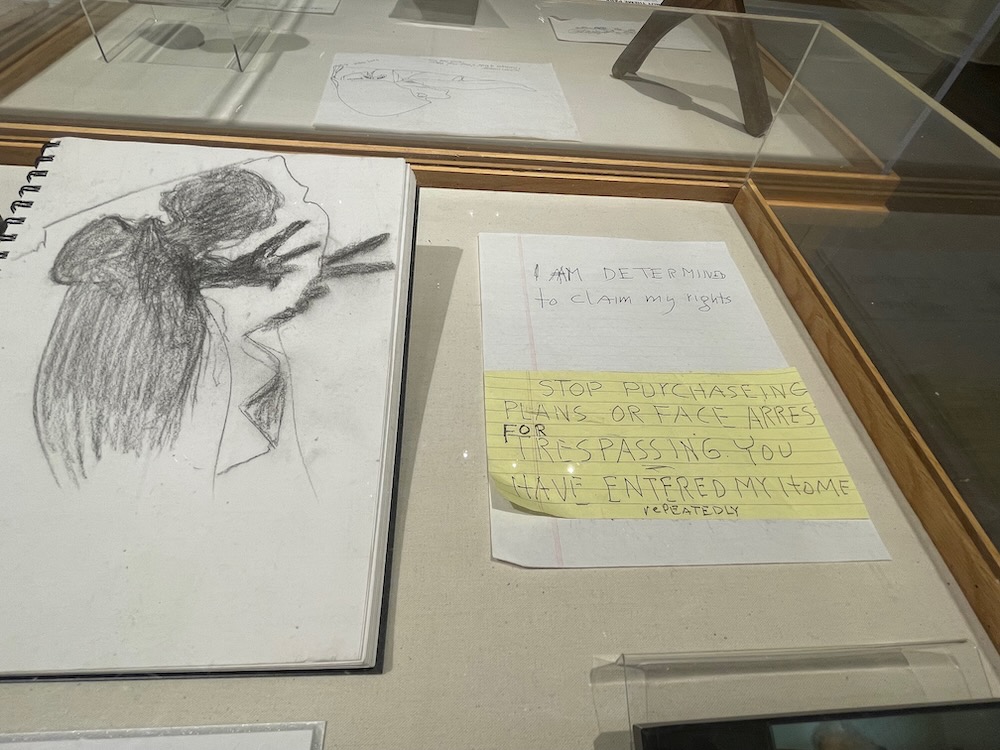
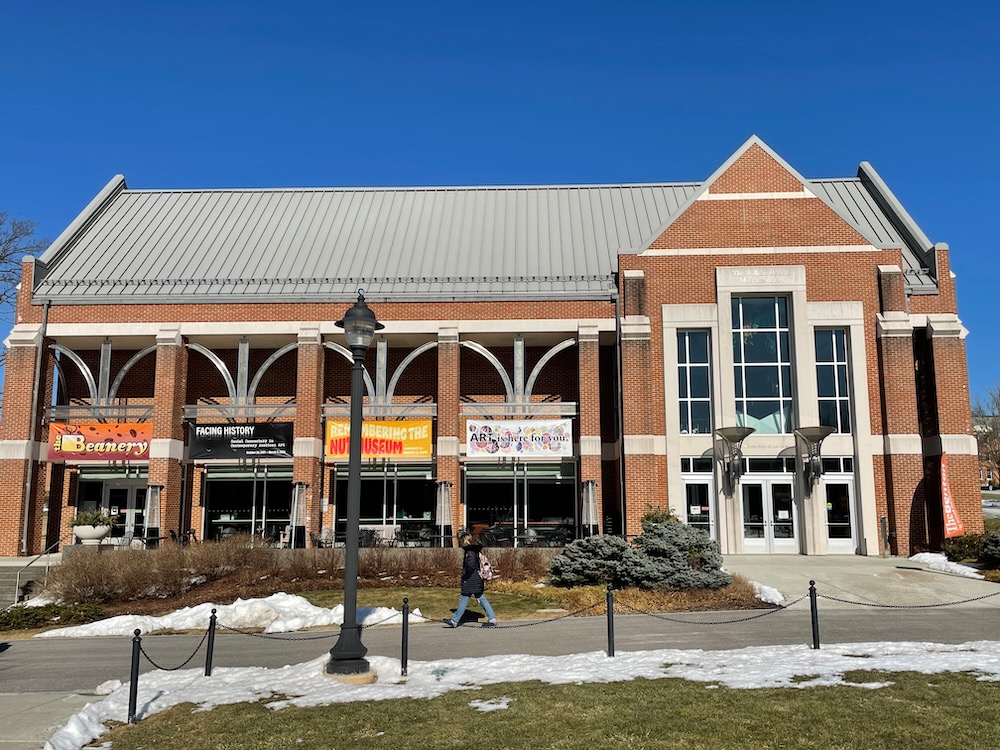
![]()

 Chris Steiner says
Chris Steiner says
April 7, 2022 at 3:42 pmThis is such a smart, perceptive, and joyful review. Many thanks for writing it!